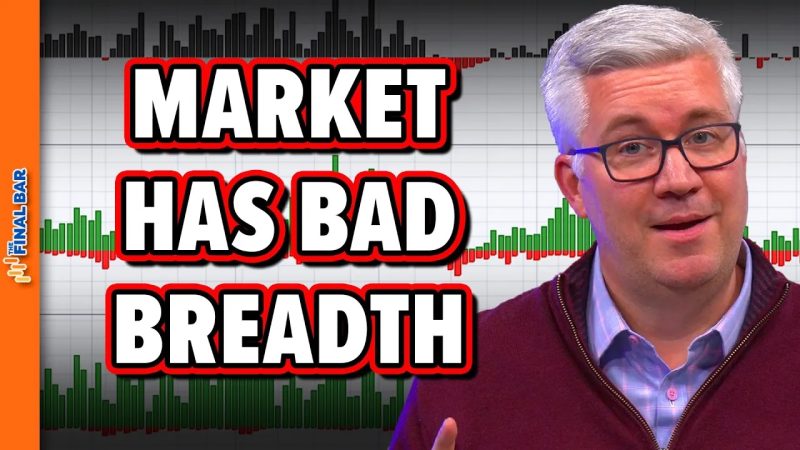Market breadth is a concept that gauges the overall sentiment of investors in an active marketplace, whether they incline more towards buying or selling different assets. It reflects the number of stocks contributing to market movements either positively or negatively. Traders use these indicators to predict market direction based on the percentage of participating stocks. But the big question arises, should you be worried about poor market breadth?
The importance of Market Breadth
Market breadth is more than just an assurance that your investments are safe. It is a measure of the overall health of the market, providing you with detailed insights into equity trends and potential pitfalls. For instance, when a fewer number of stocks are doing well, driving the market up, it might seem like everything is okay on the surface. However, poor market breadth – when a couple of large-cap stocks are leading the charge while the majority of smaller stocks are floundering – is detrimental to the overall financial ecosystem. This phenomenon increases risk in the stock market, as it becomes overly dependent on a few key players.
Understanding the Indicators
Market breadth measures and metrics such as the Advance/Decline Line (AD Line), the Arms Index (TRIN), the McClellan Oscillator and Summation Index, and High-Low Index, can give you a significant edge in grasping over or under-participation in market trends. A vast discrepancy between the market index level and these breadth metrics indicates that fewer stocks participate in the current trend, which can be a cause for concern.
An increasing majority of declining stocks in the face of a booming market index may indicate that the market is reaching unsustainably high levels or a market top. Conversely, a large number of advancing stocks in a declining market can hint at the beginning of a market recovery.
Effects of Poor Market Breadth
Poor market breadth is not necessarily a death knell for your investments. However, it does suggest that caution is required as reduced market breadth is often considered a precursor to increased volatility and potential market downturns. Investors that ignore these indicators might find themselves caught in a market correction or bear market, leading to significant losses.
For instance, the U.S. stock market crash in 2000 was preceded by poor market breadth. A sizable number of stocks had already begun to decline while the market seemed to be reaching new heights — driven by a handful of tech stocks. Those who did not assess the market breadth were caught off guard when the market eventually corrected itself.
Responding to Poor Market Breadth
Recognizing poor market breadth should prompt investors to reassess their portfolios, focusing on diversification. It provides an opportunity to reallocate assets, leading to greater stability during volatile market phases. Leaning into sectors or stocks that have shown resilience during these times may help mitigate the risks associated with poor market breadth.
Moreover, incorporating defensive assets like commodities, government bonds, and blue-chip stocks can serve as a hedge against downside risk. In essence, a poor market breadth scenario should stimulate a ‘defense’ rather than ‘offense’ approach within the investor’s strategy.
In conclusion, while poor market breadth can indeed be worrisome, it doesn’t necessitate panic. With prudent market analysis, careful planning, and smart diversification, investors can navigate through these choppy waters, ensuring the health and growth of their investments.




